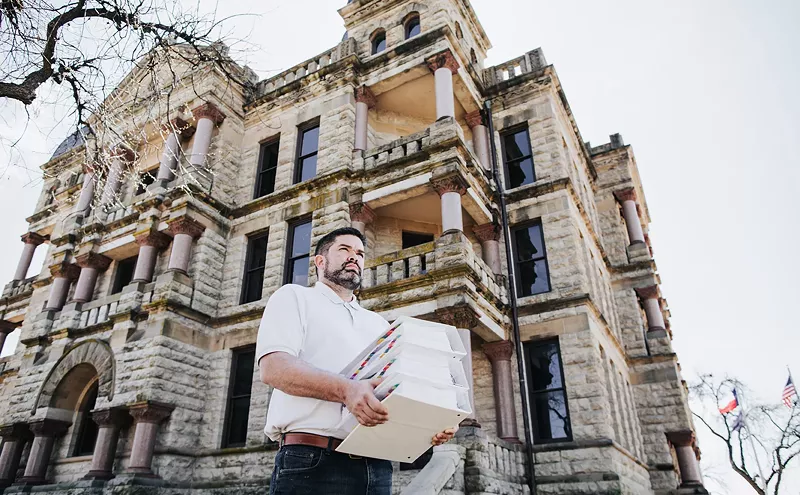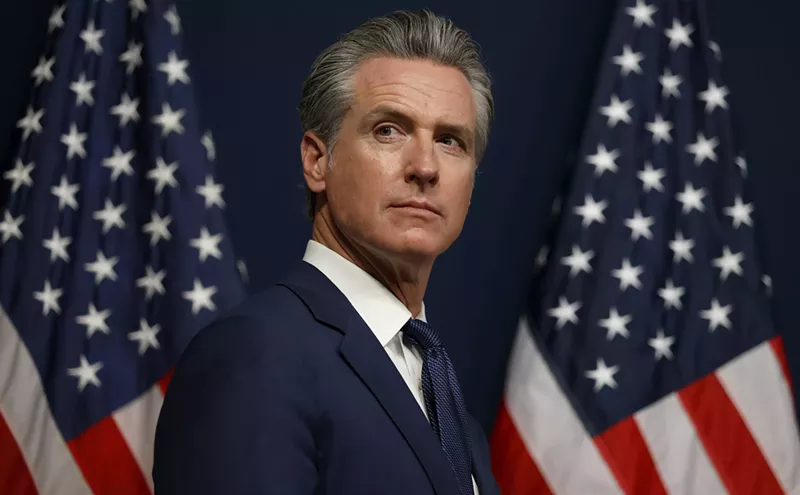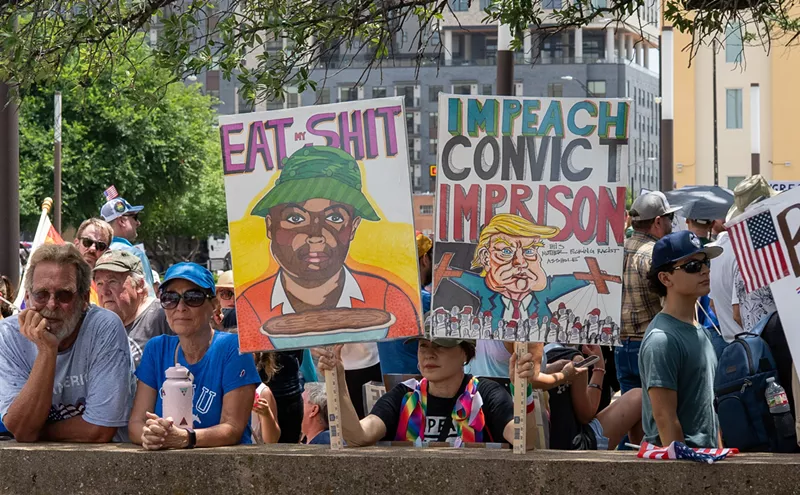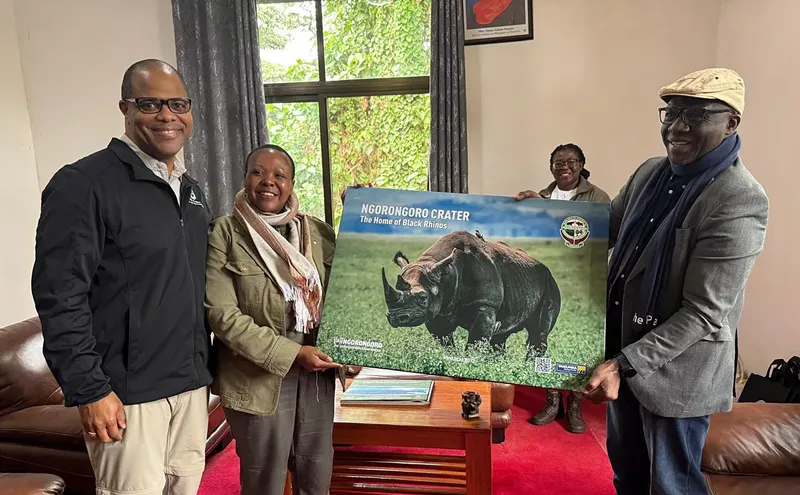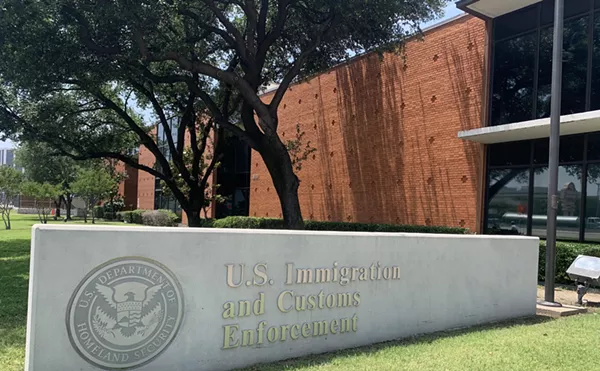Wait. Tell me again. Where do you get money? Do you get money from the mall? I thought the mall got money from you. Nothing against malls. I just don’t get how malls make the people around them richer.
Last week the Dallas City Council gave investor Peter Brodsky $2.4 million in Dallas Water Utility funds to help him redevelop Southwest Center Mall, a 90-acre, 40-year-old, 40-percent-empty property formerly called Redbird Mall at U.S. 67 and Interstate 20 in southwest Dallas near Duncanville.
Brodsky is an experienced known factor, formerly of Hicks-Muse, who says he put down $10 million of his own money last year to buy the mall. The city will give him $2.4 million to help him buy a long-vacant department store property in the mall. Hey, more power to him.
But at the moment when this little gift item came up before the council last week, a guy I have told you about before named Robert Pitre came down from the peanut gallery to the open microphone and made a moving speech to the council on the whole question of so-called incentives and economic development.
Pitre (pronounced PEEtree) owns 120-plus acres of land near the new University of North Texas' southeast Dallas campus. He is one of several black land-owners in that area who have been campaigning for years — unsuccessfully so far — to get the city to extend sewer service to their part of the city.
Pitre and his fellow landowners make the case that their part of Dallas, much of it in vacant land never developed since farming, is now one of the city’s most likely targets for development because of the UNT campus. The Legislature last year passed a law that will allow UNT to proceed with plans for a new $63 million “student life center” on the Dallas campus; DART just finished spending $104 million on a rail line extension and station at UNT; five years ago the Dallas school system opened a $22 million “collegiate academy” next to the campus; a sleek new district police station also is in the area.
But maybe more persuasive to Pitre’s point were announcements last year of two major development projects bordering the UNT campus, one headed by Mehrdad Moayedi, CEO of Centurion Development, a major suburban development company and developer of the $175 million Statler-Hilton renovation project in downtown Dallas. The other project near UNT is sponsored by landowner and developer Pettis Norman, a former Dallas Cowboys football player.
Centurion has all kinds of track record, assets and good name behind it. Norman has his own land and a good name, too. Together, the Centurion and Norman developments promise hundreds of acres and hundreds of millions of dollars in high-end residential and mixed-use investment of an order never before seen in this city south of Interstate 30.
But the DART station at UNT will be on a septic tank, because Dallas still has not extended a sewer main close enough to that location for DART or any other developer to be able to afford to connect to it. Recently, when the city rebuilt a major thoroughfare next to the campus — an ideal time to put in sewer cheaply because the road was torn up anyway — the city declined to do so.
When Pitre spoke to the council last week, he didn’t directly attack the $2.4 million grant to Brodsky for a shopping center redo, but he did point out some pretty agonizing ironies. Speaking of a recent public meeting where he first heard of the grant, Pitre said, “What got me is when they said ‘infrastructure deal.’
“You have the land around UNT, 1,000 acres of land, and the city refuses to put in basic infrastructure." He said it was absurd for DART to spend vast sums bringing rail to a new station next to UNT and the city to refuse to invest in urban infrastructure for the new station. "This project will be on a septic tank system,” Pitre said.
As I say, and as I have reported here before, Pitre and I have been talking about the no-sewers deal in his area for some years, and we have a divergence in how we explain it. Pitre sees a strong racial theme in the reluctance of City Hall or local banks and business leaders to provide capital — as either public infrastructure or private financing — that would enable black wealth building in southern Dallas.
The bond money for sewers in the UNT area was passed by voters years ago. Pitre told the council last week, “The city could put in less than a million dollars for sewer, and that facility [the DART station] would not have to be on a septic tank system.
“I would like to ask the council persons why. I know why.”
At this point the mayor tried to stop him for being off-topic, but Pitre persisted. “One of the reasons it’s on a septic tank system,” he said, “is that the land around UNT is owned by blacks. When you redid University Hills Boulevard to six lanes from two lanes, the city refused to install infrastructure because all that land is owned by blacks. You want to make it like this is not a racist city, but I want you all to think about that.”
I don’t disagree with Pitre that race must be an important element in this picture. When I moved to Dallas in the late 1970s, the city was falling over its own feet to install basic infrastructure in pastureland in Far North Dallas to “incentivize” developers, many of whom happened to be white mayors of Dallas and white members of the Dallas City Council, none of whom needed any incentive to go make millions of dollars in North Dallas.
Southern Dallas does need incentives because of its long and troubled past. That’s why a study by the Urban Land Institute recommended incentives for Southwest Center Mall.
It’s not even remotely conceivable that equivalent land in the whiter realm of the city, owned by white people, ringed by the kind of promise and interest surrounding Pitre’s part of town right now, would still be without sewers.
But there is a wrinkle for me, something I have to work out before I can call Pitre’s situation a straight-up product of racism. First of all, most of the opposition to installing infrastructure beneath University Hills Boulevard, for example, came from former council member Tennell Atkins, who is black.
Atkins insisted the area was somehow “not ready” for sewers. He always said he was looking for a major developer for the area, not to include any of the local landowners.
In the second place, the pressure to put public money into Southwest Center Mall — and the absence of pressure to invest it in the UNT campus area — all comes from the current black members of the council. They spoke glowingly last week of hopes for Southwest Center Mall, of their memories of it as a source of pride when they were young and of their hopes for it to become again a “jewel” of that region of the city.
The decline of Southwest Center Mall over the last 20 years is a saga not without a racial theme. In its heyday, the mall was surrounded by large, prosperous middle-class neighborhoods, and the depletion of those neighborhoods had a good deal to do with white flight. But it had a lot to do with black flight, too, or, as I prefer to call it, black upward mobility.
It’s not as if the region just south of Southwest Center Mall is devoid of good shopping. The communities of Duncanville, DeSoto, Red Oak, Cedar Hill and Lancaster are bristling with snappy new shopping centers. We should assume those are there because the neighborhoods near them are bristling with people, black and white, who are both eager and able to bring their money to those malls and spend it.
That’s how it works. The people bring the money to the mall. The mall doesn’t send the money to the people.
None of this means Pitre is wrong about race as an important theme. The city’s very uneven and sometimes incomprehensible scheme of priorities can’t be understood without the racial element. But it may be that our black elected representatives aren’t any better than the white ones at sorting it out.
When the Southwest Center Mall subsidy came up for a vote, two members of the council voted against it — Scott Griggs and Philip Kingston, both white. And, by the way, it takes some chutzpah to be white and vote against something like this, because of the inevitable accusation of racism.
But in a few simple remarks, Griggs explained his objection to the $2.4 million gift to Brodsky: “I fully support Southwest Center Mall,” he said, “but on this particular deal I will not be in support of it. I would rather support direct infrastructure investment in the area.
“I believe the city needs to start to get away from these types of deals,” he said, “and get more into putting infrastructure in the right of way to improve the area. If developers need additional funding sources, they can bring in other partners and change up the equity situation.”
What about this? What if the city had any kind of a guideline, a policy or even some stuff written on a napkin about what it wants to do with the hundreds of millions of dollars in tax money that it hands out over time to private parties in the name of “incentive?”
Incentive for what? Incentive how? Incentive who? In addition to the important underlying issues of racial equity, it would be nice to know our money is being handed out according to some system a little more thought out and a little more dignified than simple grab-ass.

Audio By Carbonatix
[
{
"name": "GPT - Billboard - Slot Inline - Content - Labeled - No Desktop",
"component": "21721571",
"insertPoint": "2",
"requiredCountToDisplay": "2"
},{
"name": "STN Player - Float - Mobile Only ",
"component": "21861991",
"insertPoint": "2",
"requiredCountToDisplay": "2"
},{
"name": "Editor Picks",
"component": "17105533",
"insertPoint": "4",
"requiredCountToDisplay": "1"
},{
"name": "Inline Links",
"component": "18349797",
"insertPoint": "8th",
"startingPoint": 8,
"requiredCountToDisplay": "7",
"maxInsertions": 25
},{
"name": "GPT - 2x Rectangles Desktop, Tower on Mobile - Labeled",
"component": "22608066",
"insertPoint": "8th",
"startingPoint": 8,
"requiredCountToDisplay": "7",
"maxInsertions": 25
},{
"name": "Inline Links",
"component": "18349797",
"insertPoint": "8th",
"startingPoint": 12,
"requiredCountToDisplay": "11",
"maxInsertions": 25
},{
"name": "GPT - Leaderboard to Tower - Slot Auto-select - Labeled",
"component": "17357520",
"insertPoint": "8th",
"startingPoint": 12,
"requiredCountToDisplay": "11",
"maxInsertions": 25
}
]


